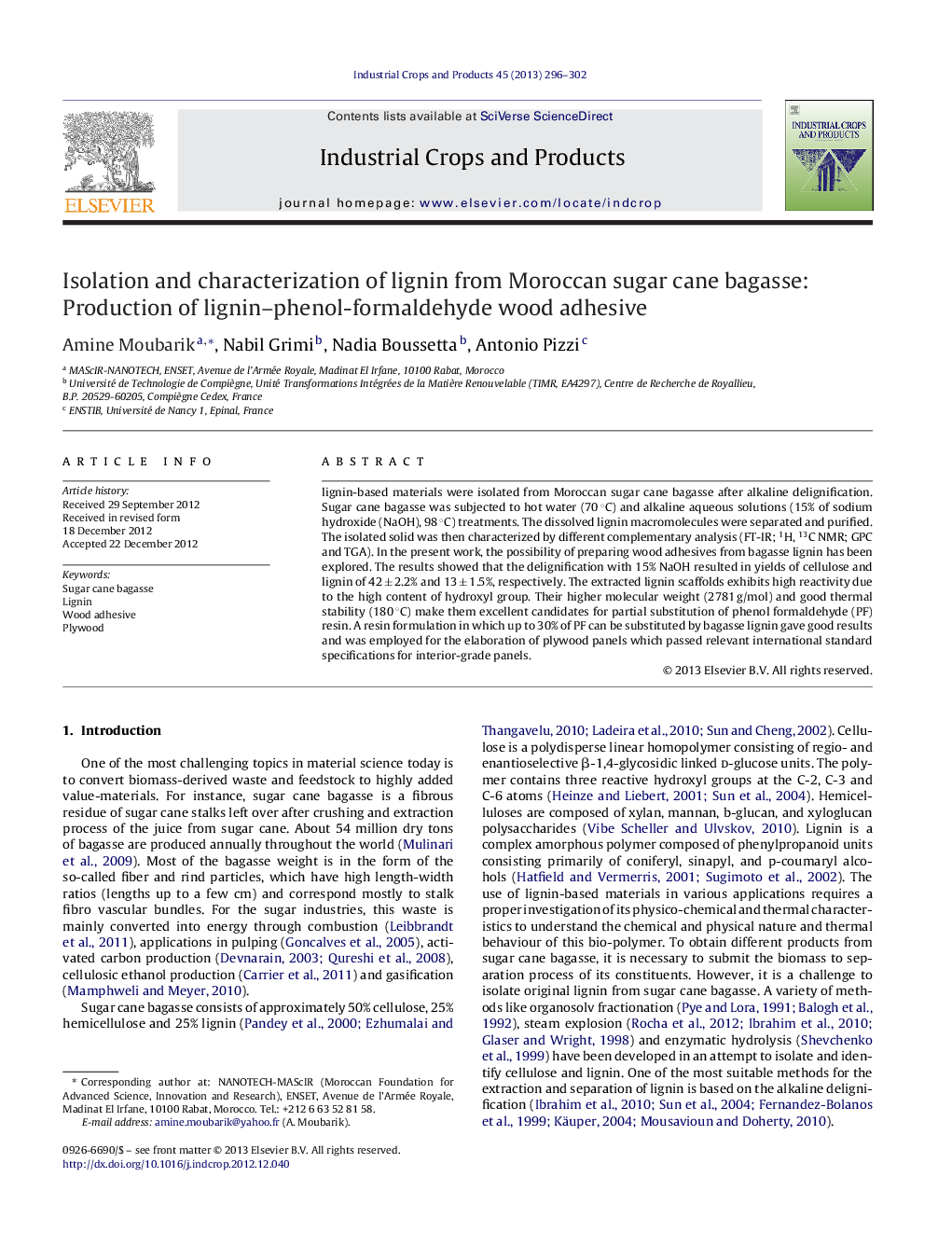| Article ID | Journal | Published Year | Pages | File Type |
|---|---|---|---|---|
| 4514051 | Industrial Crops and Products | 2013 | 7 Pages |
lignin-based materials were isolated from Moroccan sugar cane bagasse after alkaline delignification. Sugar cane bagasse was subjected to hot water (70 °C) and alkaline aqueous solutions (15% of sodium hydroxide (NaOH), 98 °C) treatments. The dissolved lignin macromolecules were separated and purified. The isolated solid was then characterized by different complementary analysis (FT-IR; 1H, 13C NMR; GPC and TGA). In the present work, the possibility of preparing wood adhesives from bagasse lignin has been explored. The results showed that the delignification with 15% NaOH resulted in yields of cellulose and lignin of 42 ± 2.2% and 13 ± 1.5%, respectively. The extracted lignin scaffolds exhibits high reactivity due to the high content of hydroxyl group. Their higher molecular weight (2781 g/mol) and good thermal stability (180 °C) make them excellent candidates for partial substitution of phenol formaldehyde (PF) resin. A resin formulation in which up to 30% of PF can be substituted by bagasse lignin gave good results and was employed for the elaboration of plywood panels which passed relevant international standard specifications for interior-grade panels.
► Isolation and characterization of lignin from Moroccan sugar cane bagasse. ► Production of lignin–phenol-formaldehyde wood adhesive. ► The delignification with 15% NaOH gave cellulose and lignin yields of 42% and 13%. ► Bagasse lignin exhibited high reactivity due to high content of hydroxyl group. ► The best results were given with the mass ratio of 30:70 for lignin and PF resin.
